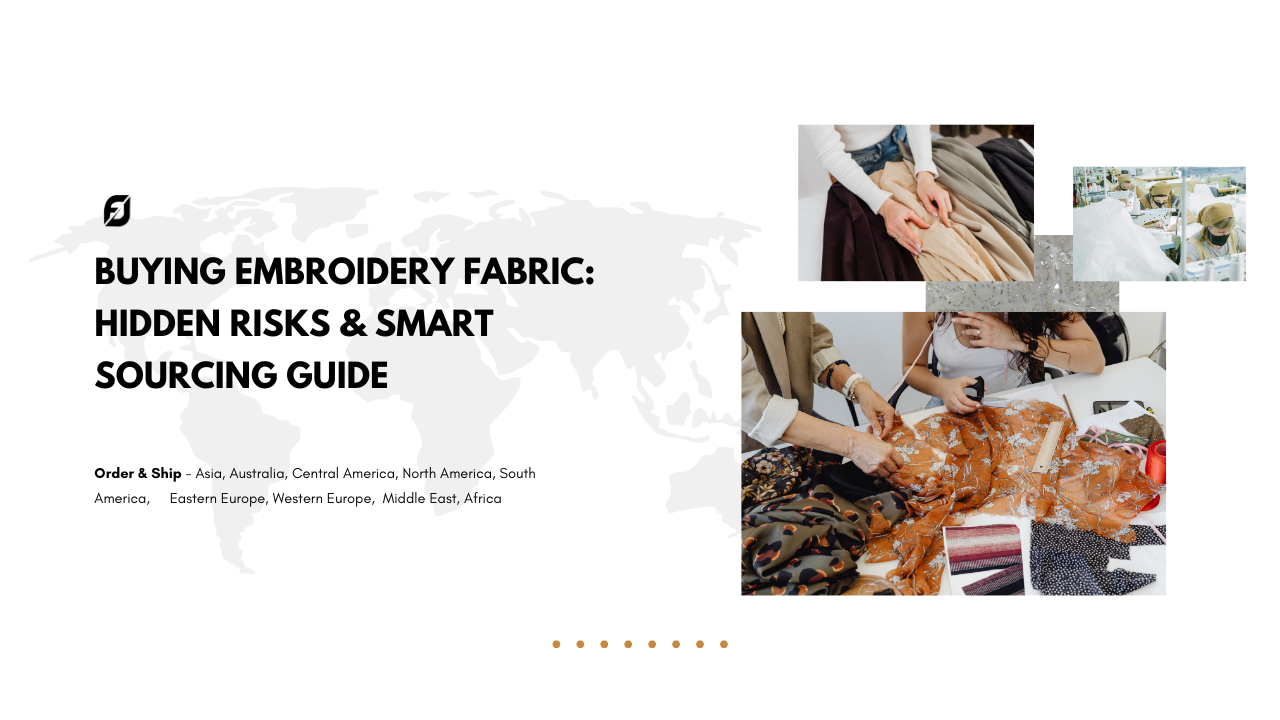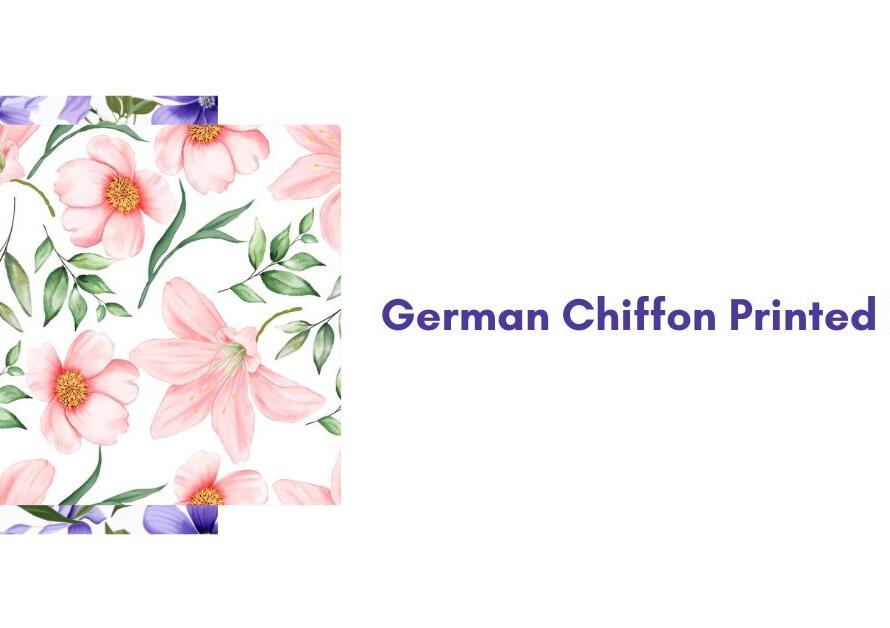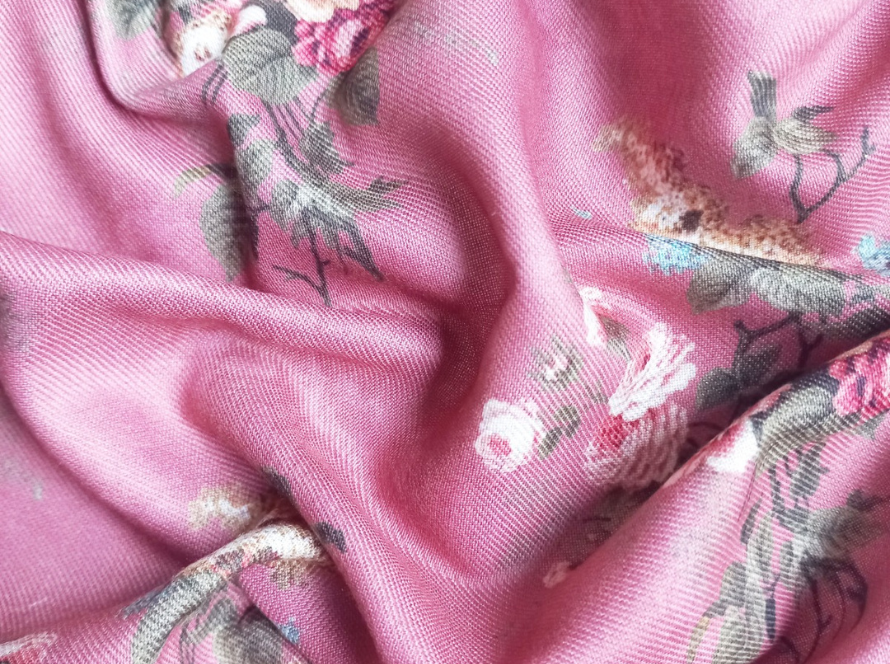Selecting the perfect fabric for your bridal lehenga is crucial to achieving a stunning and unforgettable look on your special day.
With numerous options available, understanding the different types of embroidery and how they can enhance your lehenga will help you make the right choice.
How to Choose the Best Embroidered Fabric for Your Bridal Lehenga
Here’s a comprehensive guide on choosing the best embroidered fabric for your bridal lehenga, featuring insights on popular embroidery techniques and a spotlight on Madhav Fashion, one of the world’s leading textile embroidery fabric manufacturers.
Understanding Different Types of Embroidery – Best Embroidered Fabric
1. Zari Embroidery Zari embroidery involves the use of metallic threads, typically gold or silver, to create intricate patterns. This traditional technique adds a touch of opulence and grandeur to your lehenga, making it perfect for a royal wedding look. Zari embroidery can be used to create elaborate borders, motifs, and patterns that shine beautifully under the wedding lights. For a regal appearance, look for lehengas with rich zari work that complements the overall design.
2. Beadwork Beadwork adds a sparkling, three-dimensional effect to fabrics, creating a luxurious and eye-catching appearance. Beads come in various sizes and colors and are often used to enhance floral or geometric designs. Beadwork can transform a simple lehenga into a dazzling piece of art, perfect for making a statement. When choosing beadwork, consider how it integrates with the overall design and whether it aligns with your desired level of sparkle.
3. Mirror Work Mirror work, or “shisha” embroidery, involves embedding small pieces of reflective glass into the fabric to create a shimmering effect. This technique is especially popular in Indian bridal wear and adds a unique touch to your lehenga. The reflective quality of mirror work enhances the lehenga’s visual appeal, making it sparkle from every angle. Mirror work is ideal for brides who want a vibrant and modern twist on traditional embroidery.
Choosing the Right Fabric for Your Embroidered Lehenga
1. Fabric Types The choice of fabric significantly impacts the look and feel of your lehenga. Common fabrics used for embroidered bridal lehengas include:
- Silk: Luxurious and rich, silk provides a smooth texture and a beautiful sheen that enhances embroidery. It’s a classic choice for high-end bridal wear.
- Georgette: Light and airy, georgette is perfect for a flowy lehenga. Its sheer texture allows embroidery to stand out while adding a graceful movement to your outfit.
- Chiffon: Known for its delicate and soft texture, chiffon drapes elegantly, making it ideal for intricate embroidery designs.
- Velvet: For a more dramatic and opulent look, velvet fabric provides a rich, deep color and texture that enhances the visibility of embroidered details.
2. Design Considerations When choosing an embroidered fabric, consider the following:
- Design Harmony: Ensure that the embroidery design complements the fabric’s texture and the overall lehenga design. For instance, heavy zari work may be best suited for richer fabrics like silk.
- Comfort and Fit: Choose a fabric that feels comfortable and allows for ease of movement. Bridal lehengas often require long hours of wear, so comfort is key.
- Season and Venue: Consider the season and venue of your wedding. Lightweight fabrics like georgette and chiffon are suitable for summer weddings, while heavier fabrics like velvet are ideal for cooler climates.
Why Madhav Fashion Stands Out – Best Embroidered Fabric
When it comes to selecting the highest quality embroidered fabrics for your bridal lehenga, Madhav Fashion is a leading name in the industry. As one of the world’s top textile embroidery fabric manufacturers, Madhav Fashion offers a wide range of luxurious and meticulously crafted fabrics. Their expertise in creating intricate embroidery designs ensures that every piece is a masterpiece of craftsmanship.
Madhav Fashion is renowned for its exceptional quality and attention to detail, making it a preferred choice for brides seeking both elegance and sophistication. Whether you are looking for traditional zari work, stunning beadwork, or modern mirror work, Madhav Fashion provides an array of options to meet your needs.
Choosing the best embroidered fabric for your bridal lehenga involves understanding various embroidery techniques and selecting the right fabric that aligns with your vision for the special day. With insights into zari, beadwork, and mirror work, you can make an informed decision that enhances the beauty of your lehenga. For premium quality and exquisite craftsmanship, look no further than Madhav Fashion, a leader in textile embroidery fabric manufacturing. Their exceptional offerings will ensure that your bridal lehenga is nothing short of spectacular.
By focusing on these elements, you can achieve a breathtaking bridal look that reflects your unique style and ensures you shine on your wedding day.
___________________________________________
1. What Are the Different Types of Embroidery Used in Bridal Lehengas?
Bridal lehengas often feature various types of embroidery, each offering a unique look and feel. The most popular types include zari embroidery, which uses metallic threads to create opulent designs, beadwork, which adds sparkle and dimension with beads, and mirror work (or shisha embroidery), which incorporates reflective pieces for a shimmering effect.
Best Embroidered Fabric – Zari embroidery is ideal for a regal look, while beadwork adds glamour and mirror work offers a modern twist. Each type of embroidery enhances the lehenga in its own way, and choosing the right one depends on your personal style and wedding theme. For instance, zari embroidery is great for traditional ceremonies, while mirror work might be perfect for a contemporary wedding. Keywords like “types of embroidery for bridal lehenga” and “best embroidery for wedding wear” are useful for finding detailed guides and inspiration.
2. How Do I Choose the Best Fabric for My Embroidered Lehenga?
Choosing the best fabric for your embroidered lehenga involves considering factors such as texture, drape, and how well it complements the embroidery. Popular fabrics include silk, known for its rich texture and sheen, georgette, which is light and flowy, chiffon, which offers a soft, delicate drape, and velvet, which provides a luxurious, dramatic look.
Best Embroidered Fabric – Each fabric impacts the overall appearance and comfort of the lehenga. Silk is ideal for a classic, elegant look, while georgette is perfect for a more relaxed, airy feel. Chiffon adds a graceful touch, and velvet is great for a grand, opulent style. Consider the season, venue, and your personal comfort when selecting the fabric. Keywords like “best fabrics for bridal lehengas” and “fabric guide for embroidered lehenga” can help you make an informed decision.
3. What Should I Consider When Selecting Embroidery Designs for My Lehenga?
When selecting embroidery designs for your lehenga, consider the overall theme of your wedding, your personal style, and how the design complements the fabric. Zari designs work well for a traditional, luxurious look, while beadwork adds sparkle and dimension. Mirror work offers a contemporary, reflective shine.
Best Embroidered Fabric – consider the design’s complexity and how it integrates with the lehenga’s silhouette. Intricate designs may be better suited to heavier fabrics like silk, while simpler patterns can work well with lighter fabrics like georgette. Make sure the embroidery complements other elements of your wedding attire, such as jewelry and accessories. Keywords like “choosing embroidery designs for lehenga” and “best embroidery patterns for bridal wear” can guide your choices.
4. How Can I Ensure Comfort in My Embroidered Bridal Lehenga?
Comfort is crucial when selecting a bridal lehenga, as you’ll be wearing it for an extended period. Opt for fabrics that are breathable and lightweight, such as georgette or chiffon, especially if you’re having a summer wedding. For cooler climates, silk and velvet offer more warmth. Additionally, consider the lehenga’s construction, including lining and fit. Ensure that the embroidery doesn’t irritate the skin and that the lehenga is tailored to allow ease of movement. Test the lehenga’s comfort by wearing it and moving around before making a final decision. Keywords like “comfortable bridal lehenga fabrics” and “how to choose comfortable wedding wear” can help in finding suitable options.
5. What Are the Benefits of Choosing Handmade Embroidery for My Lehenga?
Handmade embroidery offers a unique, artisanal touch that machine-made embroidery cannot replicate. Handcrafted designs provide intricate details and a personal touch that enhances the lehenga’s uniqueness. Each piece is a work of art, often involving skilled artisans who bring a high level of craftsmanship to their work. Handmade embroidery can be tailored to your specific design preferences, making your lehenga truly one-of-a-kind. While it may be more expensive, the quality and exclusivity of handmade work make it a worthwhile investment. Keywords like “benefits of handmade embroidery” and “custom embroidered lehenga” can help you explore this option further.
6. How Does Fabric Choice Affect the Visibility of Embroidery?
The choice of fabric significantly impacts how embroidery is displayed on a lehenga. Silk fabrics enhance embroidery with their smooth texture and sheen, making designs more prominent. Georgette and chiffon fabrics, being lighter and semi-sheer, offer a more delicate appearance, which can soften the look of intricate embroidery. Velvet provides a rich backdrop that makes detailed embroidery stand out dramatically. The contrast between the fabric and embroidery thread affects how well the design is highlighted. For example, darker fabrics might make lighter embroidery threads pop, while lighter fabrics might give a more subtle, elegant effect. Keywords like “fabric impact on embroidery” and “how fabric affects embroidery visibility” can provide more insights.
7. What Are the Current Trends in Embroidered Bridal Lehengas?
Current trends in embroidered bridal lehengas include a blend of traditional and contemporary styles. Floral motifs are popular, often enhanced with beadwork and mirror work. 3D embroidery, where floral elements are raised off the fabric, is gaining popularity for its dramatic effect. Additionally, pastel shades combined with intricate embroidery offer a modern twist to traditional lehengas. Mix-and-match fabrics like combining silk with georgette for different parts of the lehenga are also trending. Staying updated with fashion trends and exploring the latest collections from designers can help you choose a lehenga that reflects current styles. Keywords like “trending bridal lehenga designs” and “modern embroidery trends” will guide you to the latest fashions.
8. How Can I Find the Best Quality Embroidered Fabrics?
Finding high-quality embroidered fabrics involves researching reputable suppliers and manufacturers. Look for companies known for their expertise in textile embroidery, such as Madhav Fashion, which is renowned for its exceptional quality and craftsmanship. Evaluate the fabric’s texture, the intricacy of the embroidery, and the reputation of the manufacturer. Request samples if possible and check for reviews or testimonials from previous customers. High-quality fabrics should have durable embroidery that doesn’t easily unravel and should feel comfortable against the skin. Keywords like “best quality embroidered fabrics” and “top embroidery fabric manufacturers” can help you find reliable sources.
9. What Are the Care Instructions for Embroidered Bridal Fabrics?
Proper care is essential to maintain the beauty of embroidered bridal fabrics. Generally, hand washing in cold water is recommended to preserve the delicate embroidery. Use a mild detergent and avoid wringing or scrubbing the fabric. For fabrics like silk and velvet, dry cleaning is often the best option to prevent damage. Storing the lehenga in a breathable garment bag and avoiding exposure to direct sunlight will help prevent fading and damage. Always follow the care instructions provided by the manufacturer or designer to ensure the longevity of your lehenga. Keywords like “care for embroidered fabrics” and “how to clean bridal lehenga” can provide additional tips.
10. Why Choose Madhav Fashion for Embroidered Fabrics?
Madhav Fashion stands out as a leading manufacturer of textile embroidery fabrics due to its unparalleled expertise and commitment to quality. Known for its intricate and luxurious embroidery, Madhav Fashion offers a diverse range of fabrics including silk, georgette, and velvet, each embellished with beautiful designs. Their fabrics are crafted with attention to detail and precision, ensuring that each piece is of the highest quality. Choosing Madhav Fashion guarantees access to top-notch fabrics that enhance the elegance of any bridal lehenga. For brides seeking exceptional quality and unique designs, Madhav Fashion is a trusted choice. Keywords like “Madhav Fashion embroidered fabrics” and “top textile embroidery manufacturers” highlight their reputation in the industry.






